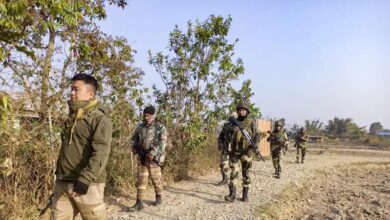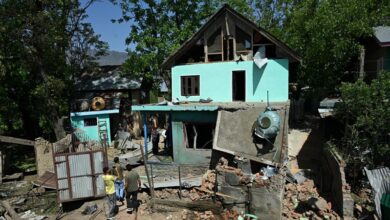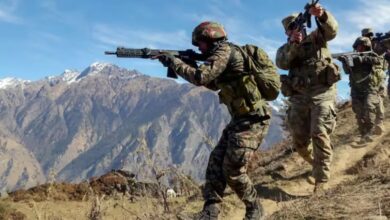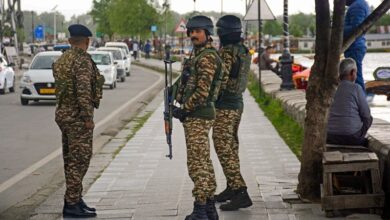Why are wealthy Indians leaving India?
News Mania Desk /Piyal Chatterjee/31st December 2024
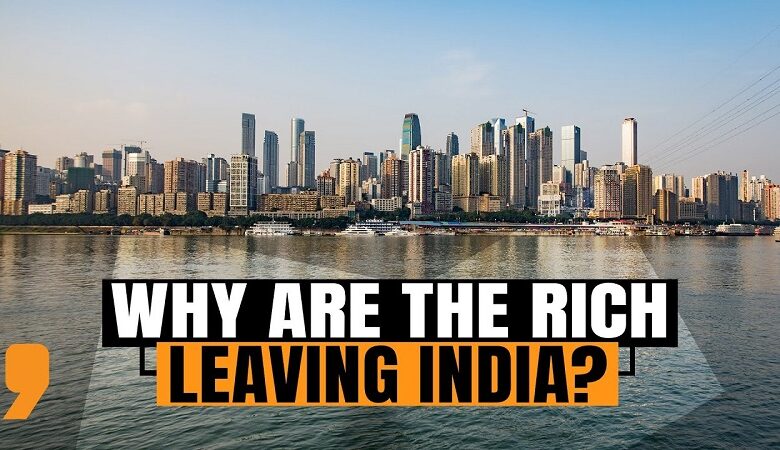
Laura Loomer, an aide to Donald Trump, might label Indians as “Third World invaders,” but the global community is welcoming them with open arms. Wealthy Indians, who have emotionally distanced themselves from their nation for a while, are relocating their belongings and enterprises abroad, becoming part of an exclusive global community. For wealthy Indians, home is no longer where their heart resides. For them, India has become no different from real estate, burdened by heavy taxation without corresponding public services to take advantage of. For these rapidly advancing individuals, India is becoming an urban volcano poised to explode. Whether they are celebrities from the realms of glamour or athletics, these newly affluent Indians without a stable residence have selected the West and the Middle East as their ultimate destination. Joining this global elite are cricketer Virat Kohli, his actress wife Anushka Sharma, and their children.
Reliable sources indicate that many leading Bollywood actors have purchased real estate in England, Singapore, and Dubai, visiting India primarily for professional commitments and hardly for leisure. It’s difficult to find a corporate leader from India who doesn’t possess a residence overseas. As stated in the Henley Private Wealth Migration Report 2024, by the end of this year, 4,300 millionaires are expected to depart from India. Last year, 5,100 individuals relocated their residences from India.
Ironically, while India is on track to become the world’s third largest economy with a GDP of $5 trillion, the beneficiaries of India’s growth narrative have opted to abandon their homeland and integrate into the Delhi-Mumbai-Singapore-Dubai-London-New York power network. It has recently become trendy for the Indian elite and socialites to flaunt their lavish residences in the UAE, Thailand, Bali, London, and the south of France, while expressing concerns over declining living conditions in Indian cities. The most expensive flats in Mayfair, London, are now possessed by Indians managing telecom firms, airlines, and steel factories in India.
As technology has transformed the whole world into a small global village, Indians are managing their enterprises more easily and confidently, from Trump Tower in New York to the Technology and Financial Park in Singapore. In reality, affluent Indians utilize second homes in different overseas cities to hold regular review meetings with top executives, who are brought in from India on chartered flights, regardless of the carbon emissions. What is even more concerning is the increasing number of Indians giving up their citizenship. This implies they have decided to sever ties with their origins and select a completely different social and cultural environment. Based on data presented by the external affairs minister in parliament last year, more than 16 lakh Indians have renounced their citizenship since 2011. Their quantity increased dramatically from only 85,256 to 2,25,620 in the previous year. The minister further revealed that Indians have acquired citizenships in 135 nations, suggesting that many are eager to depart from India at any expense and establish themselves elsewhere globally.
Wealthy Indian families are readily captivated by citizenship investments provided by Caribbean countries like Antigua and Barbuda, along with Spain, as well as the ‘golden visa’ programs from Greece and the UAE. Many advisory companies have emerged in India, specializing solely in assisting ambitious young entrepreneurs in locating a suitable residence abroad and a lucrative business with minimal complications. They have created inventive strategies to utilize liberal programs that allow every Indian to send $2,50,000 each year for investments globally. Unexpectedly, these advisory organizations have managed to effectively undermine the Indian government’s appealing environment for ‘ease of doing business’ in India. The urge to escape competitively arises from multiple economic, social, governance, and cultural problems. Although India is expanding at an annual rate of 6.5 percent, it has struggled to ensure a high quality of life. India has constructed more than one lakh kilometres of national highways in the last ten years. It has built more than 100 new airports. There’s a remarkable rise in the count of universities, medical schools, research centers, emerging startups, and unicorns, yet none of these has diminished the urge to relocate. Losing a few lakh Indians from a population of 1.40 billion may not seem significant; however, it reflects poorly on India’s image.
The main reasons for numerous Indians emigrating seem to be inadequate civic infrastructure, law and order issues in several cities, overwhelming pollution, and a complicated tax system. For numerous professionals, being in the office has turned into a nightmare. Due to a liberal auto policy aimed at increasing supply, roads in 200 cities across India are congested. India likely boasts the most extensive range of vehicles on its roads, including cycles, e-rickshaws, three-wheelers, tractors, as well as two-wheelers and four-wheelers.
As per official estimates, India boasts 21 crore two-wheelers and 7 crore four-wheelers that congest the roads, with an average of one car for every 10 adults. In any major city, the typical speed of a vehicle is only 5 km per hour. The congestion on Indian roads results in significant social and health-related issues. These automobiles remain on the road longer, producing carbon emissions, and contribute to numerous incidents of road rage. Many commuters miss flights and appointments due to unforeseen traffic issues. India hosts the highest number of the most polluted cities globally.
If road gridlock weren’t sufficient, the complete failure of civic infrastructure, along with overwhelming and frustrating bureaucracy and administration, has caused both human intellect and capital to flee. In nearly every city, illegal building and the occupation of public areas such as parks, playgrounds, and even sidewalks have rendered life intolerable for health- and safety-minded residents. Sidewalks have been transformed into grocery stalls. However, no senior civil servant or police official has ever been held accountable for the collapse of the system. Citizens endure loud sermons and prayers from mosques and temples without any decibel restrictions, while the police neglect to enforce even the court orders. The strongest concept proposed by the prime minister shortly after assuming office has been undermined from inside. While it has shifted the attitude of individuals who now go the extra distance to maintain cleanliness, municipal officials are noticeably missing from the scene.
Furthermore, as leaders engage in a noisy contest to safeguard their voter bases, it is the typical, law-abiding citizen who suffers the consequences. As the struggle for identity and entitlement shapes the framework of national politics, effective governance has become a collateral victim. Combined with a slow legal system and various tax authorities, India is turning into an uninhabitable place for these ambitious Indians. Iqbal’s anthem—“Saare jahan se achchha, Hindustan hamara”—has turned into a memory from the past. For the Indian framework, it’s a significant challenge to keep both the talent and the resources for a developed and secure Bharat.
The 93,000 Pakistani prisoners captured at the conclusion of the 1971 war are consistently highlighted in every commemorative event that takes place to observe the war’s anniversary. Nonetheless, there is limited information in the public domain regarding how the massive administrative and logistical task of boarding, feeding, and securing these thousands of prisoners was carried out by the Indian Army. In this week’s column, we examine the treatment that Pakistani prisoners of war (POWs) experienced from the Indian Army during their nearly three-year imprisonment in POW camps located throughout India, far from the border with Pakistan.
The POW camps were situated throughout India, including in Ranchi, Agra, Gwalior, Roorkee, and Jabalpur. Senior officers of the Pakistan Army, such as Lt Gen A A K Niazi, who served as the GOC Eastern Command in East Pakistan, were detained in Jabalpur. In addition to the officers and soldiers imprisoned in these camps, their parents, spouses, and children were also confined. As a result, distinct arrangements needed to be established for these civilians concerning their well-being and health requirements. Actually, numerous children were delivered to Pakistani inmates during the early days of imprisonment in 1972. A camp that housed civilian internees announced the arrival of six children in 1972.
A ration scale comparable to that of military servicemen was implemented for the Pakistani POWs. During the winter season, every POW was given either three blankets or a quilt along with one blanket. Every POW lacking a Pakistan Army pullover received either a woollen pullover or a shirt. In certain camps, sleeveless leather jackets were provided. Every POW received a pair of socks. Certain women declined the army pullovers, deeming them inappropriate, and asked for shawls that were out of stock. A ration scale akin to that of military personnel was set up for the Pakistani POWs. During the winter season, each POW was given either three blankets or a quilt along with one blanket. Every POW who didn’t have a Pakistan Army pullover received either a wool pullover or a shirt. In certain camps, sleeveless leather jackets were distributed. Each POW received a pair of socks. Certain women rejected the army pullovers as inappropriate, asking for shawls that were not in stock.
There were no grievances reported in any of the camps about freedom of worship to the inspecting bodies, including independent organizations such as the International Committee of the Red Cross (ICRC). In a Muslim cemetery located nearby the POW camps, prisoners who perished during escape attempts or from illness were interred in distinctly marked graves that could be recognized by ICRC teams. In a camp where certain POWs lost their lives during a confrontation with guards, every barrack’s windows were secured with iron bars, and the POWs were confined to their barracks overnight. Nonetheless, throughout Ramzan, they received all essential amenities for nighttime prayers and meals.
In one of the camps, the camp officials allocated Rs 5,000 to assist POWs in celebrating Eid al-Adha and designated Rs 1 per individual for the Christian POWs for Christmas. The commander of multiple camps helped the Shia prisoners of war commemorate Muharram. Translations of the Quran and Bible in Urdu were readily accessible in the camps. During Christmas, a priest came to see the Christians, who received treats and a unique menu. The Shi’ites came together as a united group for the Muharram ceremonies. A mullah, interviewed privately, conveyed his pleasure regarding the respect given to religious practices.
Numerous POWs voiced their concerns in the early days that postal or money orders dispatched from India or overseas had not been received by them. It was clarified that only non-military individuals were permitted to collect money orders. Funds or postal orders dispatched to POWs were consequently sent back to the senders. In every block, prisoners of war were given one newspaper in Urdu and four in English every day. Each week, they got two editions of the Illustrated Weekly of India. Every block contained a small library, housing predominantly Urdu books. The POWs had access to daily radio broadcasts, featuring a half-hour bulletin from 6:30 am to 7 pm on Pakistan News, a bulletin from 3 pm to 4 pm on Indian News, and an Indian entertainment show at 8:30 pm. Among the POWs, officers possessed personal transistors, junior commissioned officers had one transistor allocated per barrack, and other ranks had one per block. Typically, two films were screened each month for the POWs.
Regarding outdoor games, POWs engaged in regular physical exercises in their yard. Every enclosure had a volleyball court, and inter-camp volleyball competitions were held. For indoor activities, the POWs were provided with several decks of playing cards, a chessboard, and two carrom boards for each block. Typically, there were one harmonium, four tablas, one Indian drum, and ten flutes in the camps, supplied as donations by the ICRC. The instruments acquired from the local market were intended to remain in each block for three days before being transferred. A team from All India Radio went to the camps to capture personal family messages for broadcasting to relatives in Pakistan. Typically, three correspondence forms were given to the POWs for composing letters. A few POWs expressed frustration that correspondence sent to or received from Pakistan took between two to three months to arrive at its destination.
Several POWs received confinement terms, typically at the request of a POW officer or the senior non-commissioned officer in charge of the block. Certain POWs incurred penalties totaling 50 percent of their advance salary due to violations of military discipline. In every camp, a record of punishments was kept, documenting all specifics. All penalties were enforced in accordance with Articles 89 and 90 of the Third Geneva Convention. Clear instructions were issued to the sentries to stay composed and refrain from firing within the camp in the event of disturbances or altercations. It was observed that the Pakistani POW jawans often engaged in fights with each other, which officers linked to the blending of units, frustration, and crowding in the barracks.
The POWs made attempts to escape, and although some succeeded, others ended in fatalities. Captain Riaz-Ul-Haq of the 26 Frontier Force successfully fled from Camp 32. In Camp 95, Mohd Ishaq of the 48 Baluch attempted to escape and was subjected to 15 days of detention. Subsequently, the Camp Commander dispatched him to the Camp Hospital for several days due to his depressed condition.
In October 1972, incidents occurred at two POW camps in India. The initial event occurred at Dhanna on 3 October 1972, leading to eight fatalities and several injuries; the subsequent incident at Allahabad on 13 October claimed the lives of six inmates. In a Uttar Pradesh camp, 16 POWs, including six officers, were being taken in a closed van to the military hospital for standard dental and eye care. Upon arrival at the location, two inmates—Lt M I Rizvi and Capt Abdul Wahid—began to flee in separate directions. The driver and the escort pursued them. Lt Rizvi was seized by the driver but escaped and kept running. He faced numerous challenges but continued to run, causing the escort to shoot, ultimately resulting in his death. Capt Abdul Wahid was also injured by gunfire. In a separate event, a group of POWs in Uttar Pradesh tried to assault the guards to seize their weapons. They managed to acquire a rifle and fired at a sentry, injuring him. Another set of POWs sprinted toward the guards at the entrance, while some others started to ascend the watchtower. The sentinels on duty shot in self-defense to manage the situation, leading to the fatalities of six POWs.



